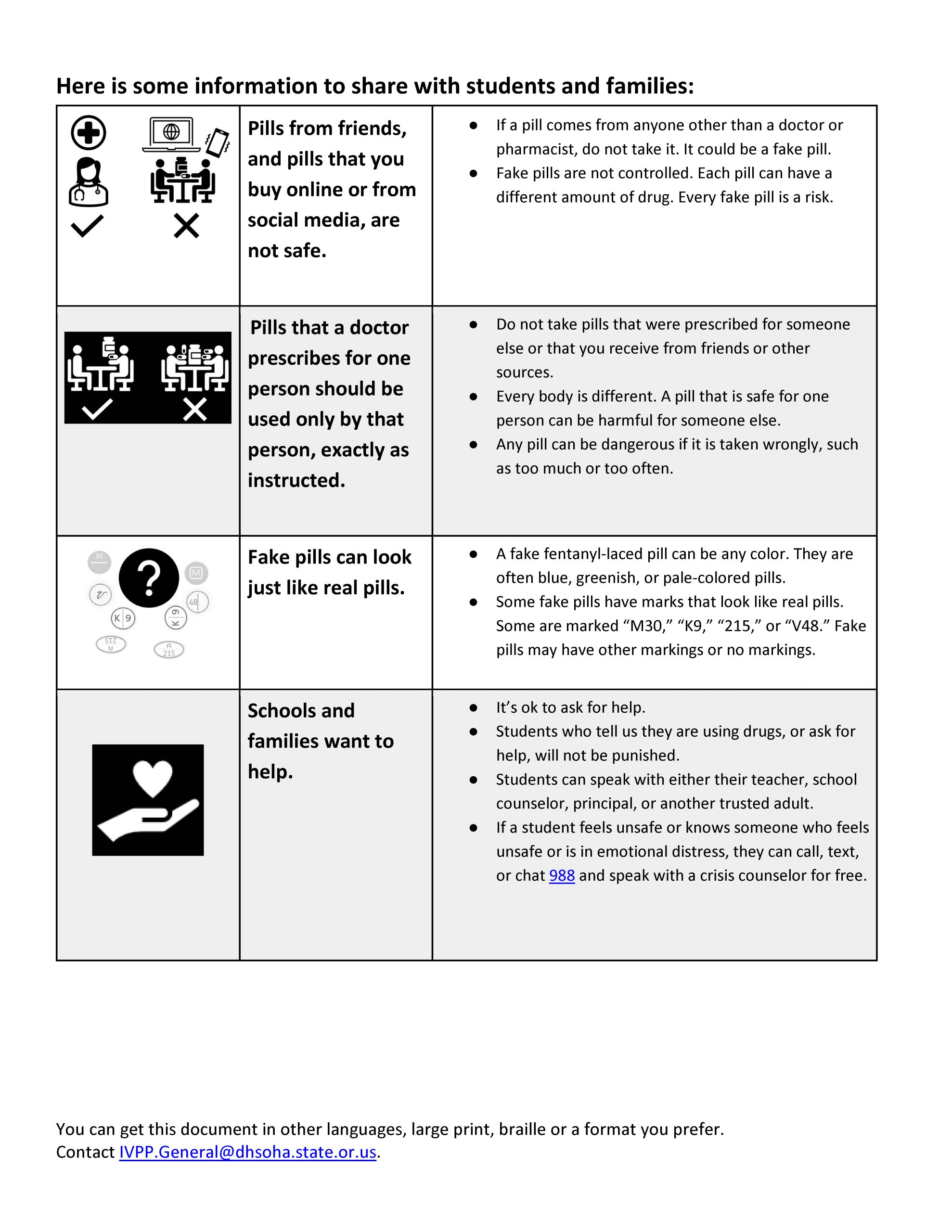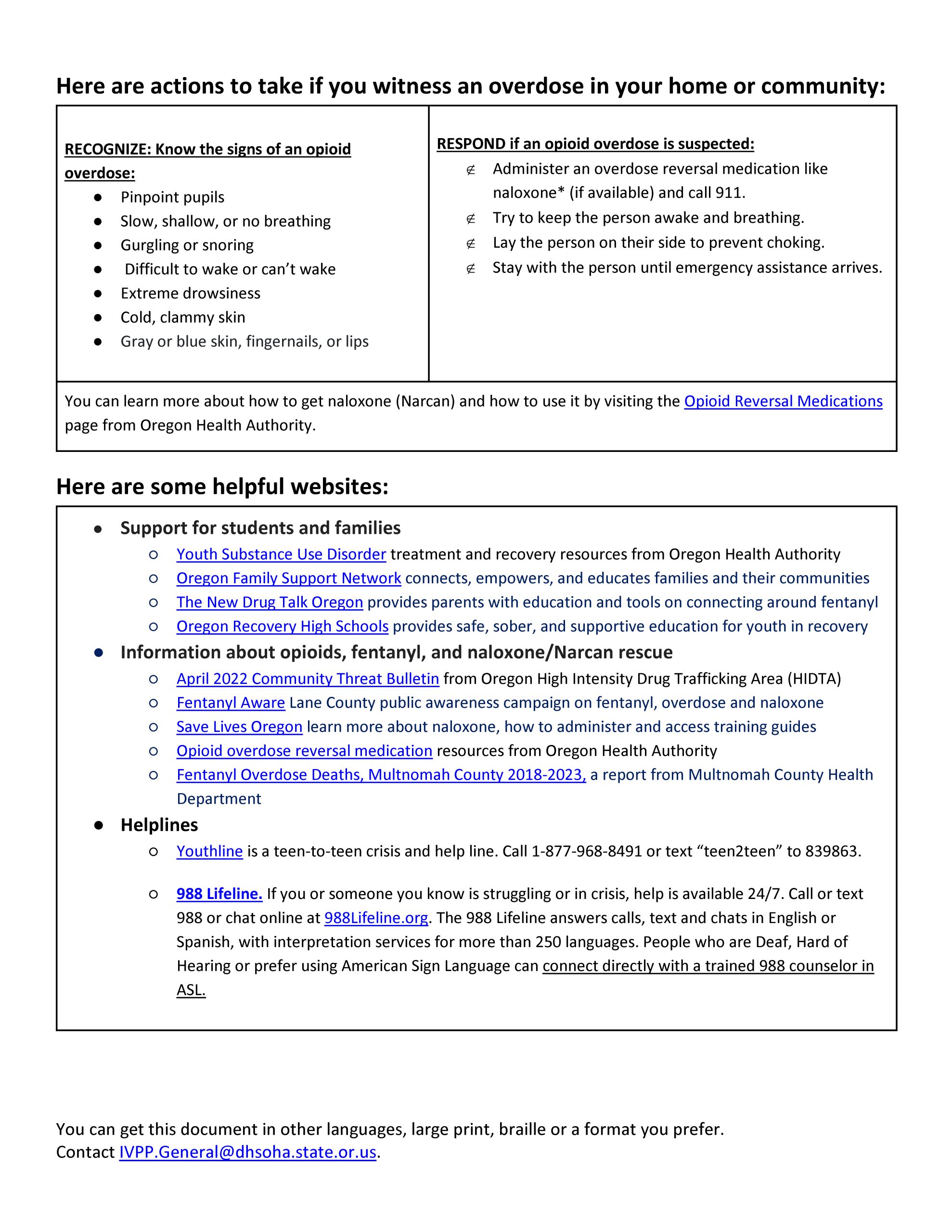What Parents Need to Know About Naloxone and Opioid Safety
May 2025
Dear Students & Families,
Our school holds student wellbeing at the heart of the work that we do. We are writing to share concerns about fentanyl and opioid drugs. These drugs are harming people in our community. We hope this information will help protect students. This letter has valuable information including guidance on how to respond to an overdose and resource links.
Teen drug use has been decreasing over time. However, data shows that there has been an increase in overdoses, mainly due to illicit fentanyl in the drug market (NIDA, 2023). It is crucial to educate students and young people about substance use risks, including the potential of fentanyl in illicit pills and other substances. It is also important to raise awareness about opioid antagonists (such as naloxone).
What is an opioid? Opioids come from the opium poppy plant and include drugs like morphine, oxycodone, dilaudid, heroin, and fentanyl. They attach to receptors to block pain and increase pleasure. Overdose is a common risk associated with opioids and can be intentional or accidental. Fentanyl is a powerful opioid: a dose as small as a few grains of sand can make a person stop breathing within minutes.
Why do people use opioids? Opioids may be prescribed as pain medicine. Some young people try drugs because they are curious. Some people use drugs to avoid feeling difficult emotions. Opioids are addictive.
What is an opioid antagonist? Opioid antagonists are medications (naloxone is the most commonly known opioid antagonist) that can be delivered by a nasal spray or injection to quickly restore normal breathing for a person whose breathing has slowed down or stopped because of an overdose of fentanyl, prescription opioids or heroin. Naloxone onset occurs within 2-3 minutes and can last for 30-90 minutes. Sometimes a second dose of naloxone is necessary if symptoms of overdose return. Naloxone may be administered in emergency overdose situations and is safe for the person receiving the medication.
What can you do? Please talk about the dangers of fentanyl and availability of opioid agonists with your students and others you care about. Consider having naloxone available in your home for the quickest response during Learn more about how to get naloxone and how to use it here: Opioid Overdose Reversal Medications.
What is your school district doing? South Umpqua School District provides comprehensive drug and alcohol education aligned with the 2023 Oregon Health Education Standards.
In addition, we care deeply about the health and safety of every student in our school community. In alignment with school district policy, all schools will stock naloxone and necessary medical supplies. Staff may administer naloxone to any person suspected of experiencing an opioid overdose. Anytime naloxone is administered school staff will call 911 and notify the student’s parents or guardian.
We know these conversations can be hard. The best person to contact should you have questions is:
Emily Veale, Director of Student Services; Phone: 541-863-3315
Warm regards,
South Umpqua School District


